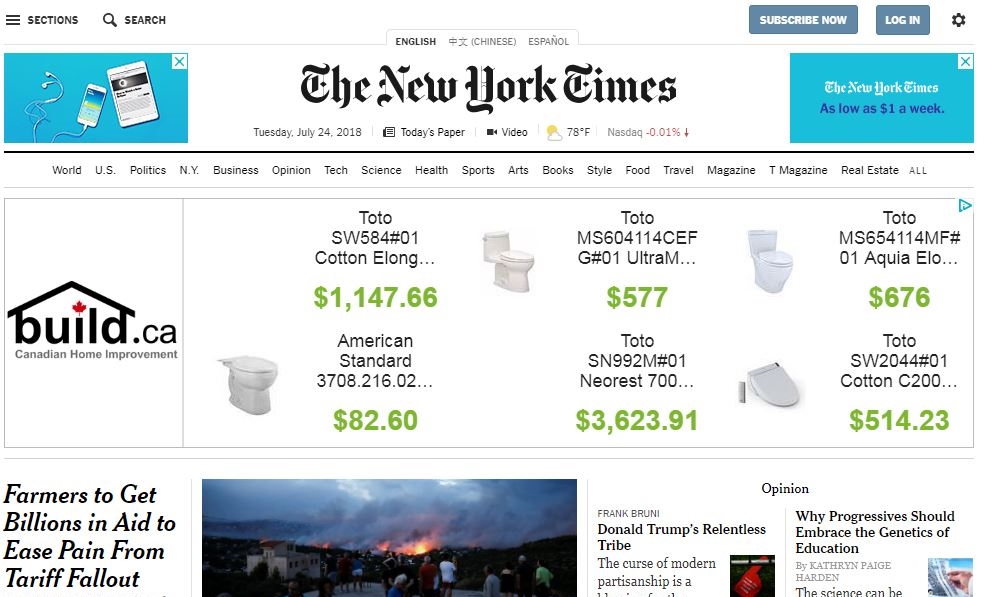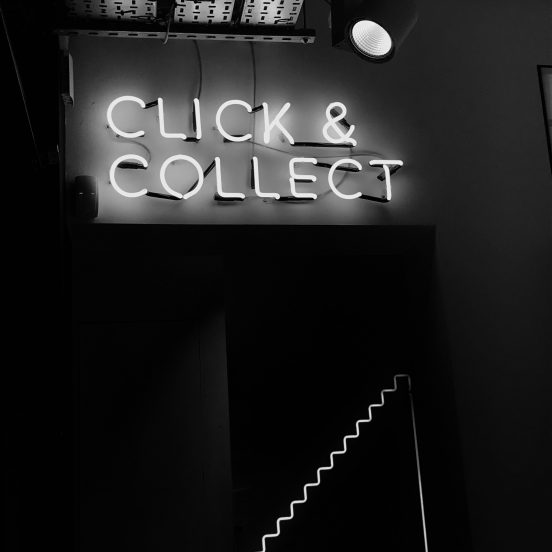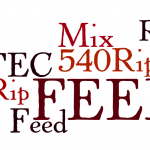I don’t know about you but if I don’t have to I do not want to pay for my news, my online entertainment or my study material – but maybe I should. Since the dawn of digital publishing, we have been conditioned to want our media for free. When online email emerged on the digital stage everyone was pleasantly surprised that Hotmail was free. When Facebook opened itself up to the general population users of all ages flocked to this free service. As recently as 2014 only one in ten daily newspapers in the US had instituted a paywall or subscription plan (Vara-Miguel, 2014). This roughly correlates with a more recent study that showed as few as 11% respondents to an online survey in the US paid for online news in 2017 (Fletcher & Nielsen, 2017). This raises the obvious question, who is paying digital media content? It also raises a more urgent question, what affects has this “culture of free” had on online learning.
In a perfect world, digital media would be free to access, readily available and reliably uninfluenced by commercial interests. Unfortunately, this is clearly not the case today. In their 2011 critique of the suitability of commercial social media platforms for learning Friesen and Lowe identify that although sites like Facebook and Google provide free access to readily available information their business model is to “bring eyeballs to advertisers” and this can change traditional models of learning for users (Friesen and Lowe p 187). They suggest that with the evolution of Web 2.0 and its increasingly interactive nature the ‘personal learning environment’ is expanding and blurring the boundaries between teacher and student. Consequently critical aspects of conversation, dialogue and debate are fading for online learners. In this environment, biases emerge and are perpetuated in what some refer to as echo chambers.
Friesen and Lowe also point out that social media audiences are being targeted with personalized information delivered with pinpoint accuracy based on their digital user patterns. We have all seen this with the washlet ads we suddenly encounter on our news feeds after we go shopping for a toilet online (this is an actual screenshot from my visit to the NYT yesterday).

In essence, Friesen and Lowe caution that these corporate media organizations are controlling content and since they do not charge their audiences we can expect that their “advertising interests become inseparable” from the media they deliver. (p. 193) I think digital media is experiencing a race to the bottom and its reliance on advertising is what is dragging it down. I also feel that Friesen and Lowe’s article understates the problem and overlooks another digital media model that allows for two way exchange and attempts to reduce corporate influence.
In addition to our educational concerns everything we are worried about with companies like Twitter and Google, such as political interference and the spread of misinformation, can be directly attributed to a reliance on advertising revenue. Even the best news organizations and journals now resort to click-bait headlines designed to maximize traffic because they have to market across media traffic to survive (Filloux, 2016). What we need is a new ethic and culture of sponsorship allowing us to support work we value. I think a possible solution lies in a business model being used by bloggers, podcasters, application developers and increasingly news agencies. I am referring to the freemium model.
Even though the culture of free continues to permeate much of the digital media market, recently some services have been able to subvert this trend by providing basic content for free and premium functionality for a subscription fee. In doing this, companies like Linked-in, Spotify and the New York Times have been especially persuasive in getting younger users to spend their money (Fletcher & Nielsen, 2017). One reason for the growing popularity of the freemium model is likely due to the large numbers of people that are growing weary of free, and sometimes unsolicited information, and believe that subscription news, entertainment, and literature offer something more reliable, more factual and better quality.
For educators perhaps this is the best possible solution to integrate social media and social networking into the class. By incorporating more effective models, such as podcast lectures or interactive live discussions, into modern course management systems students will be more likely to develop the flexibility to work in both worlds, and a discerning outlook on digital content (Alexander, 2009).
References
Alexander, B. (2009). Web 2.0 and Emergent Multiliteracies. Theory Into Practice, 47(2), 150-160. doi:10.1080/00405840801992371
Filloux. 2016, F. (2016). Clickbait is devouring journalism but there are ways out. Retrieved from https://qz.com/648845/clickbait-is-devouring-journalism-but-there-areways-out/
Fletcher, R., & Nielsen, R. K. (2017). Paying for Online News. Digital Journalism, 5(9), 1173-1191. doi:10.1080/21670811.2016.1246373
Friesen, N., & Lowe, S. (2011). The questionable promise of social media for education: connective learning and the commercial imperative. Journal of Computer Assisted Learning, 28(3), 183-194. doi:10.1111/j.1365-2729.2011.00426.x
Vara-Miguel, A., Sanjurjo-San Martin, E., & Diaz-Espina, C. (2014). Paid news vs free news: Evolution of the WSJ.com business model from a content perspective (2010-2012) Servicio de Publicaciones de la Universidad de Navarra. Retrieved from http://hdl.handle.net/10171/36276
Willinsky, J. (2017). Dr. John Willinsky on the future of Open Access: IM Public Lecture [Video file]. (2017, October 30). Retrieved from https://youtu.be/RiovIhvO7kA








alicia lok-malek
July 29, 2018 — 3:11 pm
Well said. We get what we pay for.
The corporate world has successfully created the expectation that free is good. The cost has been invisible to us but it is there. With each click of free, we are giving financial power to the corporations that use each click as a net increase in eyeballs.
Why do we expect education to be free? Or is it that we expect education to be free to our up and coming generation? As you questioned about who is paying for digital media content? Who is paying for education?
Through my recent courses, I am just beginning to understand the shift to neoliberalism over the last few decades. It caused me to question my husband when he said, “we shouldn’t vote for him because he is going to raise taxes”. Do we need to maintain better levels of government funding in public broadcasting? in public education? It follows that the funder dictates the quality and design of the solution – in their own interest.
amy
July 29, 2018 — 6:07 pm
Hi Jamie,
You raised a valid question when you asked who is paying for digital media content and quite simply put, I think we are. Friesen and Lowe mentioned that social media platform users are targeted and tracked for their personal information, which is then collected and used to deliver personalized information back to the user. You gave a great example of how ads of toilets popped up in your news feed after you shopped online for a toilet. You were then presented with ads in your news feed to where you could purchase your new, modern and comfortable toilet, and all for the very low, low price of $XXX.XX. These corporate media companies are just playing the odds, and the odds are, eventually you will click to see what a great deal you can get for that new toilet. It’s just human nature. I know for a fact that my browser and its news feeds are currently filled with ads of kids Native shoes ever since I decided to browse for another pair for my kids. Since then I’ve been reminded every day of the great “deals” online. I won’t lie, I just bought two pairs for a great price with an extra coupon code off of a Canadian online retailor. It was bound to happen, especially with the convenience of ordering online with a click of a button, mixed with summer procrastination, and well just with the odds they were playing. They got me and I spent about $90 for two pairs, all while simultaneously doing some of my readings online.
Which leads me to what the affects of this “culture of free” has on online learning. Pretty much I won’t pay a dime for any apps or even subscribe to an online newspaper to which I have to pay for. I’m just of the mindset that unless I can get something tangible, there’s no way I’ll pay for it. Perhaps if educational content was difficult to find and was rarely free online, I’d be more inclined to pay for these things. But with the cost of living so high, I don’t think I’d pay for it just because there’s so much content on the internet for free that I feel like if I have to pay for something somewhere, I’ll just look for it free somewhere else. I have also found my students to have the same attitude and well considering they have even less pocket money to spend than I, to me it all make sense.
But then again with more and more distractions on the internet, perhaps we will have to go down the road of paying for our educational support in the future. I’ve heard that if you pay for “premium” subscriptions for different online apps and platforms that you will see less ads or no ads at all! Perhaps then, if education continues to have distractions with all these additional ads, I may have to resort to paying to remove the nuisances. You get what you pay for and as my ECON 101 professor said, “There’s no free lunch”. Everything comes at a cost, so maybe if we don’t pay for our education it will be of inferior quality. Perhaps then we should invest in our future. Isn’t that what we are always telling our politicians when we ask them to provide more funding for our schools?
References
Friesen, N., & Lowe, S. (2011). The questionable promise of social media for education: connective learning and the commercial imperative. Journal of Computer Assisted Learning, 28(3), 183-194. doi:10.1111/j.1365-2729.2011.00426.x
Anonymous
August 1, 2018 — 7:27 am
Hi, Jamie.
On both my home and work laptops, I have installed “AdBlock” extensions. At work, this is vital because I use some YouTube videos within my teaching (who doesn’t like Sesame Street’s word of the day) and cannot take any chances with inappropriate content being advertised to my tiny humans. At home, I just got tired of all the pop-up ads and targeted messaging. It works well, for the most part. I like free content and don’t want to give up my brain power or eyeballs to advertisers. Remember the days of switching channels on the television during ads? That isn’t quite as easy in our Internet age.
Recently, some sites which are reliant on advertising for their revenue stream have begun to tell me that they know I have the blocker installed and I cannot view their site because of it. I can turn off the blocker for that site, but it certainly makes me evaluate whether or not their content has ‘value’ for the trade-off.
What I have seen in the social media side of things is that the platforms are getting ‘smarter’ about embedding the advertising so that it is less obtrusive in addition to being targeted. FaceBook ads are now directly in my newsfeed. Instagram ads appear after my friends latest posts, and YouTube is embedding ads within the videos so that you must wait to see the rest of the content after the 15-second ad.
Which brings us to the question of ‘free’. Is anything ever free? And what are we willing to trade for this ‘freedom’.
Is healthcare free? No, we pay taxes to support it, and I would gladly pay more to improve the system, but I’m glad that my doctor doesn’t stop mid-diagnosis to serve me an ad. But can this be far off in the world of pharmeceutical giants needing physicians to push their products? Would we tolerate this because we don’t have to ‘pay’ for our visit?
I might pay to use a toll road. Does this mean that there shouldn’t be billboards on the side of the road selling products to my eyeballs?
The question of free vs paid and the place each venue plays in our society is or can be, polarising. But I don’t think it is a new question. What are we willing to trade to NOT pay for something? Privacy? Data? Time? I guess that everyone would answer differently, depending on the service or platform we are talking about.
Carri-Ann Scott
August 1, 2018 — 7:29 am
UGH! My login timed out. The above comment is mine 🙁
Cheers!
Carri-Ann
JamieTooze
August 5, 2018 — 2:51 pm
Carri-Ann,
If you want please feel free to post again and I will delete the other two postings.
Jamie
joanna cassie
August 10, 2018 — 3:16 pm
Excellent post Jamie, thank you! How to teach the skill of discernment when it comes to getting things for free? Maybe we can take a lesson from medicine. In the beginning, pharmaceutical companies paid for nearly all of medical education so for physicians it was “free”. Of course it was completely biased toward the sale of their own drug or equipment. It has been a long road but eventually physicians conceded that they would need to give up their “free” ski vacations/seminars/dinners in exchange for integrity, or at least transparency, in their education. This is the health of the public, after all. Pharmaceutical companies still really believe they can provide the best education by skillfully downplaying the fact that it is all for their bottom line at the end of the day. But you can never ever get away from that fact! I spend all my time trying to discern bias in medical education. Proper management of bias includes: transparency through disclosure of commercial relationships and proper management of conflicts of interest (sometimes means replacing a planning committee member or speaker too close to pharma, say, if they have ownership stock in the company). In the freemium services model it is fine because that problem does not exist: we know you are a company that wants our money eventually, and we may pay it if we decide that your service is better than what we could accomplish on our own. However if there is one thing we have found it is this: for-profit companies must never be in control of educational content. I know, a university is a for profit business now – but until the scale tips completely into corporate darkness we still want to believe that the education is unbiased and perhaps it still is for the most part. Whatever model we choose, it is important to remember that education is an expansion of the mind not the expansion of faceless pockets.